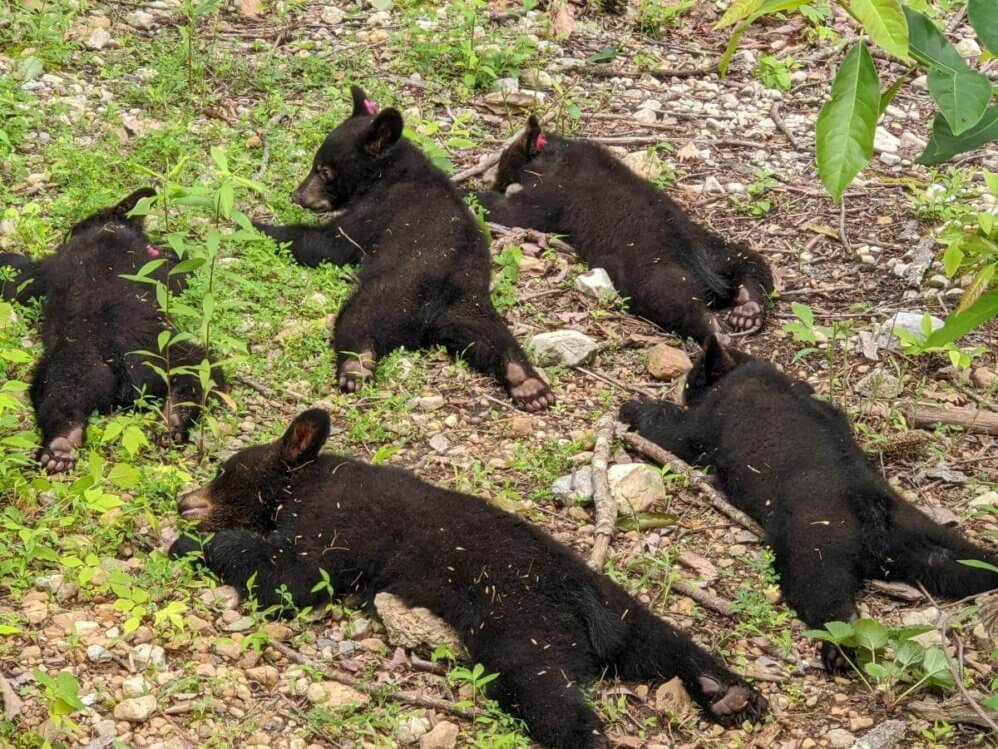
Bears are in full force this summer; here’s what to know before you go outdoors.
FOREST – Don’t pet or try to hug the bears while camping. And above all, hide your food. As odd as it may sound, that’s the advice from Blue Ridge Parkway officials, after a series of bear encounters.
In recent weeks, portions of the 469-mile parkway closed to some visitors, due to increased bear sightings. Officials at the campground near milepost 408 reported that a young bear entered occupied campsites, made close contact with humans and took food from the sites.
“[This] is more of an operational adjustment than a full-scale closure,” said Leesa Brandon, Blue Ridge Parkway external affairs specialist. “We’re limiting some of the camping options.”
Originally set to expire on Thursday, Blue Ridge Parkway officials extended the precaution to July 1.
The move to restrict some equipment came around the same time as a bear attack just over the state line in Tennessee. On June 18, the bear entered an occupied campsite around midnight and attacked a 16-year-old girl as she slept in a hammock. Officials closed the site until further notice.
In Virginia, campground restrictions due to bear sightings are rare, but they do happen.
“We have at times had some very localized site closures of either particular camp sites or recreational areas or picnic areas that tend to be pretty short lived. They tend to be when bears in the area are really attracted to the food,” said Nelson Lafon, Virginia Department of Wildlife Resources forest wildlife program manager. “There’s been some issues of bears maybe even getting into vehicles or close incidences with people. That’s the kind of times when they get closed down.”
I Saw a Bear: Is that Rare?
The National Park Service estimates that more than 900,000 American Black Bears live in North America. A total of 5,000 to 6,000 call Virginia, and especially the Blue Ridge, home.
With the majority of Virginia bear sightings reported from April to November, Lafon noted two practical reasons.
“It basically comes down to a combination of there being more people being out in the woods in bear habitat and the fact that bears are more active this time of year than they are before they come out of their dens and when they go into their dens,” Lafon said.
One of the main motivators of human and bear interactions involves food.
“What happens is sometimes this time of year before a lot of their natural food sources are prevalent for them – the berries and seeds and nuts and things that they eat normally – all of that is still coming in,” Brandon said. “So they’re looking for food from other locations.”
The proximity of campers and their food sources sometimes draw humans and bears together.
“Bears are pretty savvy at finding food sources around humans. A lot of times our developed campgrounds, developed picnic areas, sorts of things [that] are associated with recreational areas end up [with bears],” Lafon said. “A lot of people do the right thing. In fact, I think most people do the right thing as far as with storage and disposal of food and other trash, but it’s inevitable that bears are going to be attracted where there’s a lot of people with food and trash. I think that’s why you see bears in particular more frequently around developed recreational areas than you do just at-large in the woods.”
A Natural Habitat
Of course, picnic areas aren’t the only places people see bears.
The American Black Bear lives all over Virginia. From Virginia Beach to Appalachia, sightings occur each year. Lafon noted that their greatest concentrations tend to be in either mountainous regions or the Great Dismal Swamp.
“[The bear population is] just not as dense in the Piedmont as they are in the mountains – and that goes back historically,” Lafon said. “They’ve just been in the mountains longer. There’s a larger extent of habitat there for them. It mostly goes back to the fact that that’s where the bear populations have been the densest for the longest.”
Brandon expressed that the majority of bear and human interactions in the wild don’t lead to confrontations.
“Most of the time, the bears and the humans can coexist just fine, as long as everyone’s being kind of bear-wise and not giving them access to food sources that they shouldn’t be having,” Brandon said.
However, if Virginians come across a bear, leaving it alone is the best option.
“Don’t attract a bear and don’t make it feel comfortable,” Lafon said. “If you don’t do those two things, then you have a great chance of not having any kind of encounter.”
Prepare for Bears
If you’re going on a hike, out for a picnic or on an overnight outdoor excursion, prepare in case you see a bear.
“On the preparation side, the primary thing it comes down to is attractants – and how you store your food and how you dispose of your food,” Lafon said. “There are some variations if you’re camping or if you’re hiking, but it comes down to the same things. Just be as clean as you can at your site. Don’t leave food around. Store food securely and dispose of food securely. Those are really the primary things to do.”
Also, going with a group oftentimes keeps bears at bay, as does making loud noises. In case a bear gets too close for comfort, some hikers carry pepper spray.
He also suggested keeping dogs on leashes or leaving them at home.
“Dogs can sometimes lead to an aggressive response by bears,” Lafon said.
If someone encounters a bear, Lafon suggested quietly leaving the area.
“Do not run. You want to move away from the bear, but do not run. Sometimes running can actually evoke a predator response and we don’t want to do that,” Lafon said. “You don’t want to approach the bear or get closer to take a picture. If you see a bear out in the woods, the best thing is to just leave it alone and leave that area quietly, but not running. That’s the best thing to do.”
Amie Knowles reports for Dogwood. You can reach her at [email protected]
For more of Amie’s wildlife stories, sign up for Dogwood’s free newsletter
Politics

Youngkin, Democrats to start over on budget talks
The Republican governor stood with Democratic leaders in the General Assembly on Wednesday in a bid to ease tensions over their budget debate....

VIDEO: Domestic abuse victims speak out against the gun law bills Gov. Glenn Youngkin vetoed
Senate Bill 47 and House Bill 46 aim to close the loophole that allows offenders to transfer their firearms to someone else instead of relinquishing...
Local News

Virginia verses: Celebrating 5 poetic icons for National Poetry Month
There’s no shortage of great writers when it comes to our commonwealth. From the haunting verses of Edgar Allan Poe, who found solace in Richmond's...

Join the fun: Recapping Family Literacy Night’s storybook adventures
When’s the last time you read a book aloud with a loved one? If it’s difficult to answer that question, then maybe it’s time to dust off that TBR...





